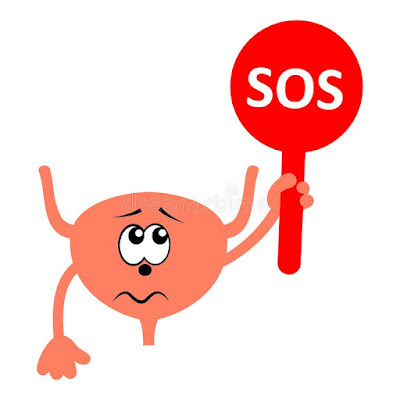Bladder trauma is an uncommon injury that can be caused by a direct blow to a distended bladder, high energy injury which disrupts the pelvis, penetrating, and iatrogenic injuries.
The two basic types of damage to the bladder by trauma are bruises and tears. Blunt injury (a bruise) is damage caused by blows to the bladder. Penetrating injury (a tear) is damage caused by something piercing through the bladder. Almost everyone who has a blunt injury to the bladder will see blood in the urine.
Symptoms :
- Lower abdominal pain.
- Abdominal tenderness.
- Bruising at the site of injury.
- Blood in the urine.
- Bloody urethral discharge.
- Difficulty beginning to urinate or inability to empty the bladder.
- Leakage of urine.
- Painful urination.
 |
| Bladder Trauma |
Nursing Interventions for Bladder Trauma
Nursing Diagnosis 1 :
Acute pain related to urinary tract trauma
Goals :
- Report pain relief/control with outcome criteria:
- The client does not complain of pain.
- Pain scale 0.
- Cheerful facial expression.
- Vital signs within normal limits.
Nursing Interventions :
1. Assess pain, note location, characteristics, severity (scale 0-10). Investigate and report changes in pain appropriately.
Rationale: Useful in monitoring the effectiveness of drugs, progress of healing. Changes in the characteristics indicate the occurrence of abscess or peritonitis, requiring medical evaluation and intervention efforts.
2. Measure vital signs.
Rationale: Vital signs describe the client's condition and facilitate further intervention.
3. Provide a comfortable position (semi-fowler position)
Rationale: Relax muscles and relieve abdominal tension that increases with the supine position.
4. Teach the client deep breathing techniques.
Rationale: Increase the supply of O2 to the tissues so that anaerobic metabolism does not occur.
5. Teach the client distraction techniques such as back massage
Rationale: Distracting the client's attention so that it is not focused on the pain that is felt.
6. Collaboration: administration of analgesics.
Rationale: Analgesics function to slow down impulses from efferent nerves to pain receptors in the hypothalamus.
Nursing Diagnosis 2 :
Impaired physical mobility related to pain
Goals :
- No barriers to physical mobility with outcome criteria:
- The client is free to move without any pain.
- Unlimited movement.
- The client can meet his own needs.
Nursing Interventions :
1. Record emotional/behavioral responses to immobilization.
Rationale: Forced immobilization can increase anxiety, sensitivity to stimuli.
2. Help the client to do passive to active ROM gradually.
Rationale: ROM can train muscle and joint strength and prevent atrophy / contractures.
3. Assist the client in meeting his daily needs.
Rationale: Minimize the occurrence of further physical weakness.
4. Explain to the client about the causes of weakness and the benefits of action.
Rationale:
Increase the knowledge of the client and are expected to cooperate with nurses in taking action.
Nursing Diagnosis 3 :
Anxiety/Fear related to changes in health status.
Goals :
- Anxiety is resolved with the outcomes criteria:
- The client looks happy.
- The client can understand the condition.
- The client seems calm.
Nursing Interventions :
1. Assess the client's level of anxiety.
Rationale: One of the information that describes the client's level of anxiety.
2. Give the client the opportunity to express his feelings.
Rationale: The client feels cared for by nurses in the hospital.
3. Provide information to the client about his condition.
Rationale: Help reduce stress experienced by the client.
4. Give spiritual encouragement according to his religion and belief.
Rationale: Healing is not only on medication, but there is power from God.
